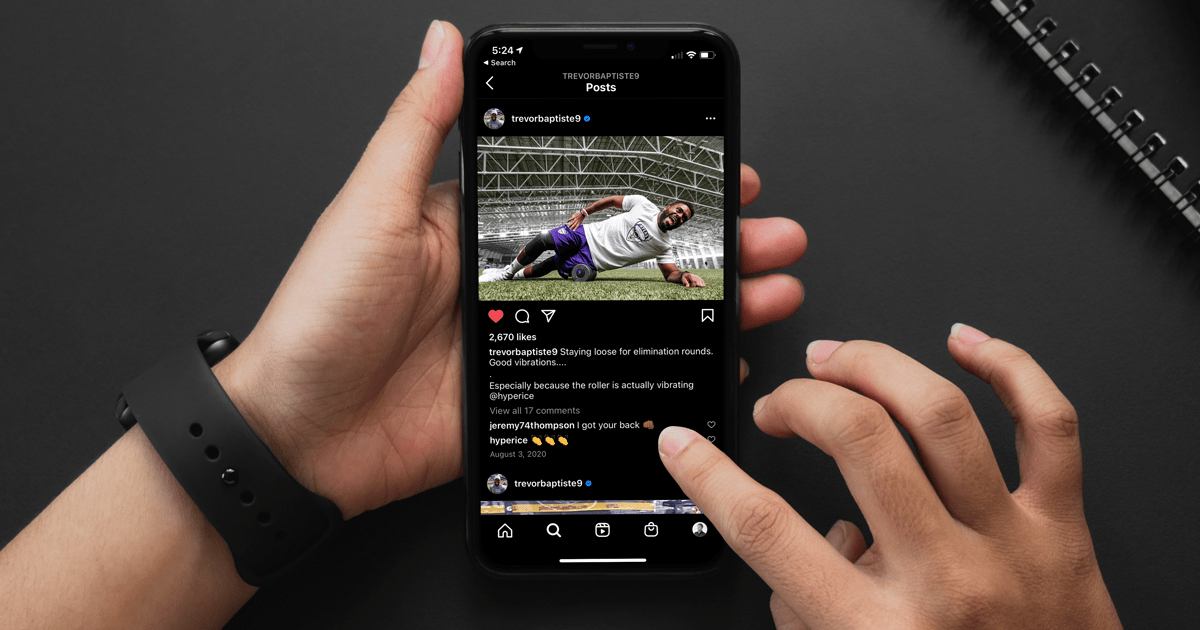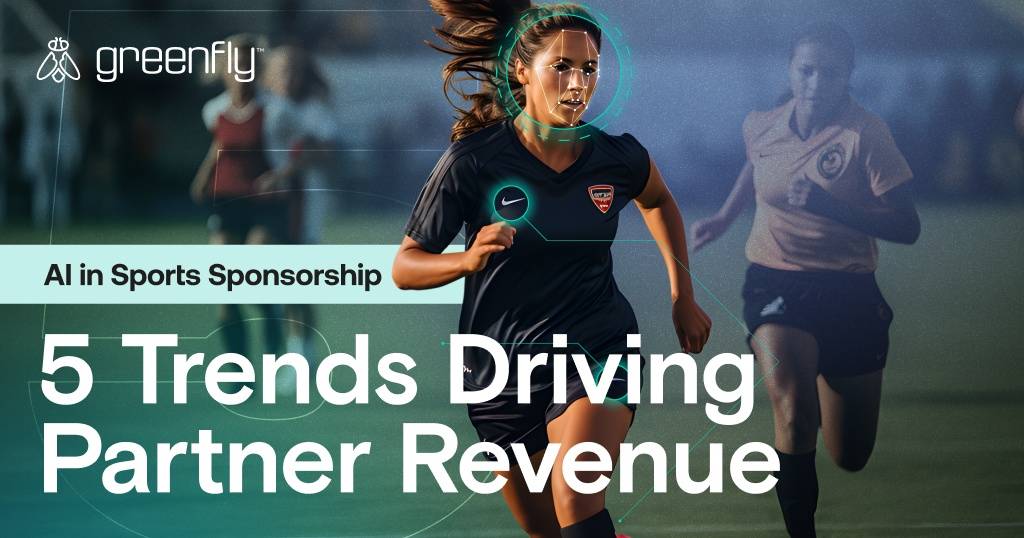Athlete brand partnerships have changed. Yesterday’s strategy to activate athlete partnerships during the past two years has evolved so much it requires new, innovative thinking. Social media has presented so many new opportunities for brands to work with athletes, and although the basic compensation model hasn’t changed, the fan influence that athletes have has increased exponentially.
Two years ago, a brand-sponsored athlete shares a social media post with the hashtag #ad alongside a picture or video from a production shoot, and some copy that doesn’t sound like the athlete wrote it him or herself. And that was it.
The athlete fulfilled their contracted number of posts and the brand focused on other channels to activate the athlete partnership such as events, appearances and commercials.
Then 2020 happened. Social media became the #1 for everybody as the center for communication, engagement and information. More social media users, including athletes, had more time on their hands. Many seized the time to tell their story, to post more, and to develop their personal brands on social media platforms. This accelerated the need and the opportunity for evolving how brands activate athlete partnerships. The SportsPro 50 Most Marketable Athletes list now means something different, and more complicated. Its not just a simple count of fans and followers that drives marketability, it’s fan engagement, fan influence and fan demographics. Does the athlete align with the brand, and does that athlete appeal to the consumer segment(s) that brand is targeting?
Athletes Are Professional Influencers
Athletes have a huge influence on social media, but brands can’t activate them like influencers. They’re brand advocates or brand ambassadors. When they stand behind a product or service, they’re giving it their endorsement, and their fans expect it to be authentic and genuine. They have long-term relationships with brands, not short-term flings for a transactional post or set of posts.
Instead of pre-written social media posts that read like ads, the athletes need to connect with their audience. They can post unique photos and videos, and write in their own voice. Instead of a one-way endorsement, the athlete and brand both benefit. The athlete and brand can work together to create content for each of their social media channels—as a partnership. This is not a utopian vision, this is how some athlete-brand relationships play out today.
Players in the Premier Lacrosse League (PLL) offer an example of such collaboration and content exchange.
The PLL recognizes that their players are brand ambassadors, whose personal success is intertwined with the league’s. Athletes, league staff and corporate partners all share a private group communication and content exchange channel. The league and the club proactively provide each athlete with access to galleries of game clips and practice photos, so they have great content for their personal social media feeds. League partners also have access to galleries of photos and videos from PLL games, practices and content showcasing their products. The result: Players and partners deliver more of what their fans want—high-quality content in their feeds.
Athletes Are Partners, Not Commercials
Fans can tell the difference when an athlete’s social media post appears contrived. True endorsement power comes when the players can post naturally—when it looks ad hoc, as if they snapped a quick pic during practice or on an off day at home. That authenticity makes fans feel they’re getting a sneak peak into the athlete’s life.
Is it better for the brand to have their sponsored athlete’s social media show a product front and center, holding it right in front of the lens, OR is it more effective when the athlete appears to be living their everyday life and the product is part of their natural habits?
That question illustrates a key concept: #partner posts should not look any different than the athlete’s regular posts. The way to make that happen is to let the athletes lead the content, with direction and production assistance (if needed) from the brand.
Athletic recovery brand Hyperice experiences the benefits of social media authenticity in their partnership with the PLL and its players. Hyperice gave the league and players guidance on what they wanted the content to accomplish and then let the players do their thing, their way.
Take a look at the social posts below from a few PLL players that promote Hyperice products. It’s clear their Instagram posts are written in their own words and the photos look like they could have been shot between drills at practice, during a pregame warm-up, or when they were recovering at home. (The partner activation extended to dozens of PLL players.)
View this post on Instagram
View this post on Instagram
This is already an improvement on the old model of activating athlete partnerships on social media, but it’s only step one. It’s not just about activating the athlete’s personal social media channels, the brand’s own digital and social media channels can benefit, too.
Next-Level Sports Partnerships: Athlete-Created Content
When athletes act as creators and take photos and videos to post on their social media, that content becomes currency for the brand partner. The forced shift away from expensive production shoots brought on by the pandemic was a blessing in disguise for brands. If they were forward-thinking, they were able to use brand advocacy platforms like Greenfly to ask athletes to produce original content.
Embracing this homemade content that the athletes could produce themselves was just the start of next-level sports marketing. The result has been content that’s not only less expensive to create, but also more valuable—because it’s more authentic. Many brands have found this content outperforms studio-created media by a significant margin, increasing fan engagement and distribution. And that content is not just for a single social post on the athlete’s feed. It’s a supply of valuable content for the brand, too.
The pandemic has caused this trend to progress more quickly, but many of the PLL’s partners were already ahead of the curve before 2020. The athletes were already treated as more than just walking billboards with vast social media platforms. So when Hyperice asked players to post photos of themselves using Hyperice products to social media, they had the players use Greenfly to submit those photos back to the brand’s marketing team, too. Hyperice was not only getting value from player social media posts, they received authentic content for their own brand channels, as well.
Consider the far-reaching value of content for the brand. It’s content for a few organic posts, yes. But it’s also real photos and videos from PLL players that they can use for their paid social media, search ads, email marketing, website and beyond. Brand markers can’t underestimate the value of content when activating athlete partnerships.
View this post on Instagram
Athletes Are More Powerful Than Influencers for Brand Partners
The new paradigm to activate athlete partnerships is about empowerment. Athletes have the direction, but also autonomy and resources to post content on their terms. Meanwhile, the brand has open access to a pool of content from the athletes. The difference between partners and advertisers and between influencers and ambassadors is that there is a relationship beyond a transaction. Partner and ambassador athletes already live and love the brand.
There is a consistent exchange of value. Athletes have the means, whether through product or updates from the brand, or access to content from a photographer or editor, to post on social media. And that content they post aligns with the social media content they would be producing without a sponsor paycheck. Also, just like a player has access to photos and videos from their events and games (thanks to a solution like Greenfly), so do their partners.
That’s how it works for the PLL and its players and partners. Their partners don’t have to produce or buy photos or videos of the best lacrosse players in the world. They have access to the same pool of content the league and players do. With an open door to a bank of high-quality content, the value for partners is immeasurable. And that content is better than any contrived production shoot could ever produce.
View this post on Instagram
View this post on Instagram
The Best of Both Worlds: Authentic Athlete Content With Partner Enhancement
The magic happens when partnership and collaboration meet content. Athletes want cool photos and videos that make them look good, brands want authentic endorsement. The two sides can help each other get what they want when they have the technology to make content exchange easy.
A great illustration of this content exchange and enhancement in action is in the Instagram post below from competitive lumberjacking champion (and sponsored athlete) Matt Cogar. There is Cogar’s original content, which looks like he shot it himself locally, but it’s enhanced by Red Bull’s producers to create something both cool and authentic for Cogar’s Instagram feed. It’s the best of both worlds and it benefits both the athlete and the brand.
View this post on Instagram
The Challenge of Tracking Athlete Partnership Activations on Social Media
The old way of doing things prevailed for many years out of necessity. When athletes post on social media in a more transactional manner, it’s easier to track for the brand. They publish the prescribed post and that’s it. When athletes have access to more content and are empowered to post about the partner in their Stories on a whim or when the opportunity arises, brands can’t track that activity. But they can when the content lives in a central bank where all deposits and withdrawals of content get marked and measured.
Such content collaboration allows programs to scale with autonomy, authenticity and measurement. The one-off posts are easier to track and measure, but nobody believes those activations provide more long-term value than ongoing relationships and content. Measurement remains an important part of the investment in these athlete partnership relationships. It’s just less linear than the one-off sponsored posts of years past.
(Recommended read: Eight Ways to Demonstrate Value to Sponsors Through Social Media)
Activating Athletes
Activating athletes has never been more important. They are both their team’s biggest marketing promoter and influencer, and also their brand partners. Download this free playbook on Activating Athletes.
- Athletes value social media WAY more than you think
- Thew promotional power of players can be directly influenced by marketing and communications teams
- Providing digital media directly to athletes makes team operations & athlete relations teams more effective
- Better digital communication with players will continue to drive value for team sponsor, and increase sponsor revenue
The Future Is Bright for Brand-Athlete Partnerships
Bringing the business and athlete parts of the organization together is definitely a trend accelerated by COVID-19. But it’s here to stay. Organizations that think their athletes don’t want to be supported on social media are already falling behind. And brands that encourage their athletes to showcase their lifestyle, not pitch products, have been benefitting with increased reach and loyalty for months. Increased brand affinity results from just about every aspect of this mutually beneficial relationship.
This type of athletic partnership will only increase in value, opportunity and importance in the years to come. And, this isn’t a trend that will quickly fade, as authenticity lives right at the center of it. See more examples of brand-athlete collaboration and media sharing here, learn more about Greenfly, or set up a call with us to chat!
Photo Source: @hyperice. Instagram. August 21, 2020. https://www.instagram.com/p/CEKq6j0gvEx/




